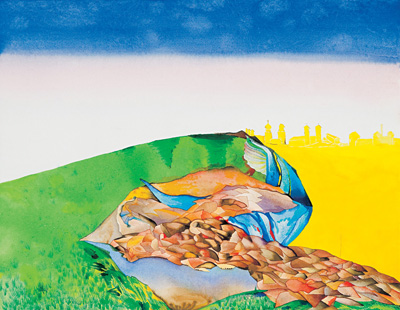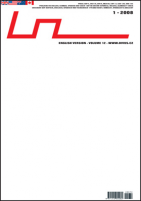| Umělec magazine 2008/1 >> Lukáš Karbus | List of all editions. | ||||||||||||
|
|||||||||||||
Lukáš KarbusUmělec magazine 2008/101.01.2008 Jiří Ptáček | new faces | en cs de es |
|||||||||||||
|
When Lukáš Karbus left Martin Mainer’s studio at the Brno school for the arts, he returned to the town of Pihel, near Česka Lípa in the Sudetenland. He set up shop, became a partner in a saw mill and currently plants Japanese poplar trees whose fast growing wood serves as biomass. He paints in the evening when he can, after work.
There would be no reason to imagine Karbus as a northern Bohemian tree farmer if that were not reflected in his art work. Indeed, after his departure from Brno—just before he was to finish his studies—he started to control the output of his watercolors and rough sketches of his ideas substituted instead a concentrated but time-demanding picture production process. Moreover, he focused on the Česka Lípa region in his work with watercolor for his academic thesis (2007), and for the year after. He drew and redrew the region’s mountainous horizon, sometimes filling in with the crystaline structures inspired by six-sided basalt pillars in the area. It is from the fields in the area that his still-life works are derived—such flowers are so different from those in flower shops. At first glance, it is clear that these aren’t topographical portraits at all. Extracted from the present, Karbus berids his illustrations of any association with a specific time, and particular elements are brought together freely into a coherent whole. He likes to use a broad spectrum of techniques—carefully working out details, decorative geometric borders in large single-colored fields. The power of fantasy is balanced with a cautious approach to the articulation of the composition. It is not Karbus’ objective to be outside of visual culture’s mainstream, but it’s an aspect of his authentic approach to artistic expression. It is very important for his intuition to be open to expression, to produce images from memory and powerful sensual experiences without concealing that the process of drawing is very important to him. He says that in the villages he has time to observe and that observing is more important than “doing.” To be sure, he’s no auto-didact. At a recent exhibition at the former Eskort gallery in Brno, he was represented at Brno’s Kabinet. This year he is preparing an exhibition at A.M 180 in Prague. He continues to be a member of the Punkwa group of students, and is a graduate of Mainer’s studio. www.punkwa.com
01.01.2008
Recommended articles
|
|||||||||||||










Comments
There are currently no comments.Add new comment